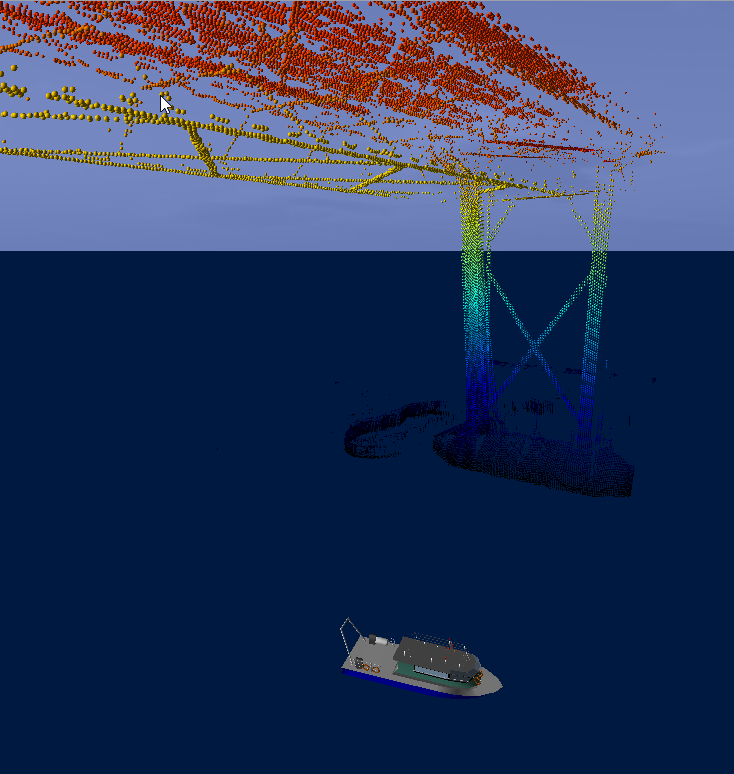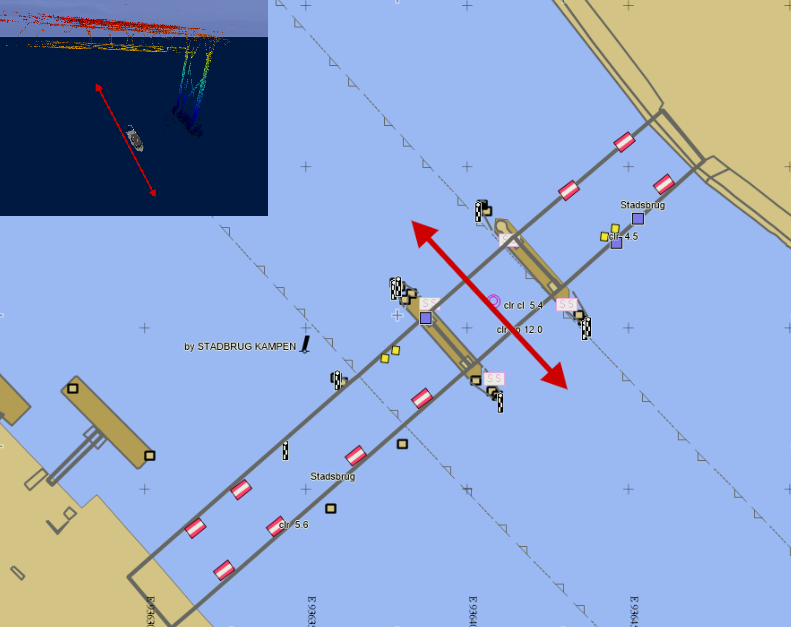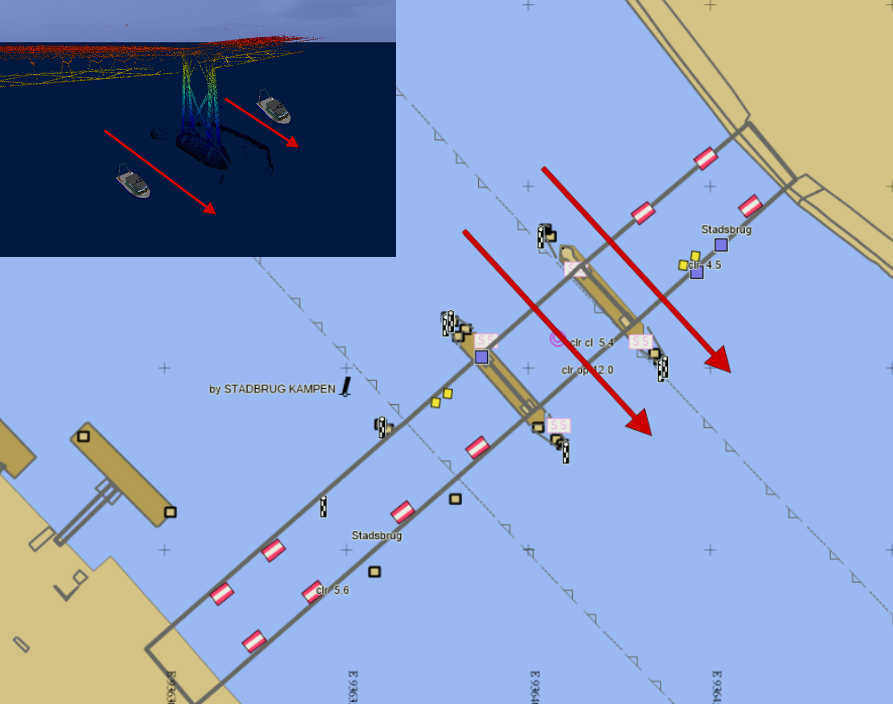How-to Calibrate Vessel mounted Laser
General
It is important to calculate the Roll, Pitch and Heading offsets of the system before a survey starts. This page will describe how to do a patch test for a laser system that is mounted on a vessel.
A laser patch test differs not that much from a normal patch test, except that the data is now recorded vertically and not horizontally like a multibeam.
This article will describe what kind of object is advised to do a patch test with, how to sail the lines for roll, pitch and yaw and how to calculate the values in the Validator.
Please visit the page 'How-to Laser Alignment' for an example.
The difference between a Multibeam patch test and a Laser patch test is that for a laser it is preferable to sail around an object.
This is not always possible, but then it is also possible to sail a couple of times linear to an object with an offset.
On this page:
Patch test preparation (around an object)
It is preferable to sail the patch test lines around an object like a pole. If a pole is not available, then it is also possible to sail around a bridge pillar.
Downside of this last method is that the GPS signal can be blocked by the bridge itself if the bridge is too low.
The line planning can be created in the Survey Manager of Qinsy when the best suitable area is found. An ENC chart can be handy to search for the best suitable location.
The following lines are needed:

Roll / Pitch
For the Roll and Pitch calculation is it possible to use the same line. The pattern that needs to be sailed is shown in the image at the right. With those two lines is it possible to obtain the Roll and Pitch values. It is advised to use the same survey speed. It is preferable to go slow so that the density will be high.

Heading
For the Heading calculations is it necessary to sail two different lines, in the same direction at different sides of the pole/pillar. During the survey of the two lines, is it advised to use the same survey speed. It is preferable to sail as close as possible to the object.

Return to: How-to Calibrate a Laser Scanner
